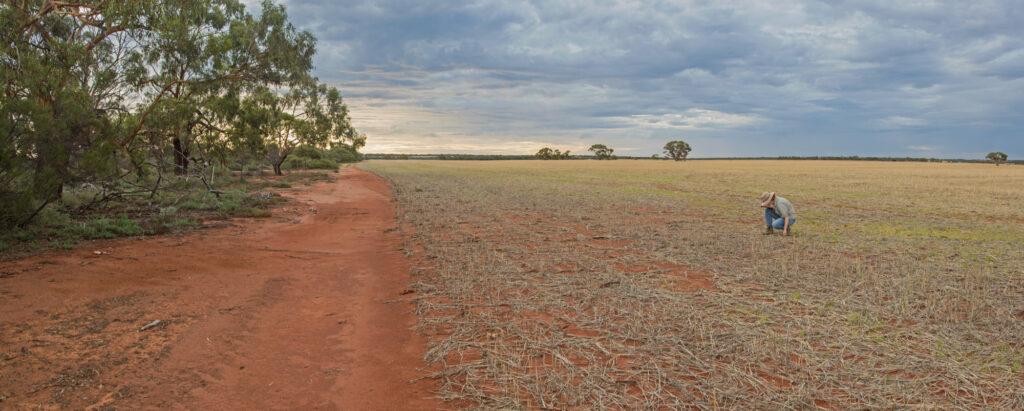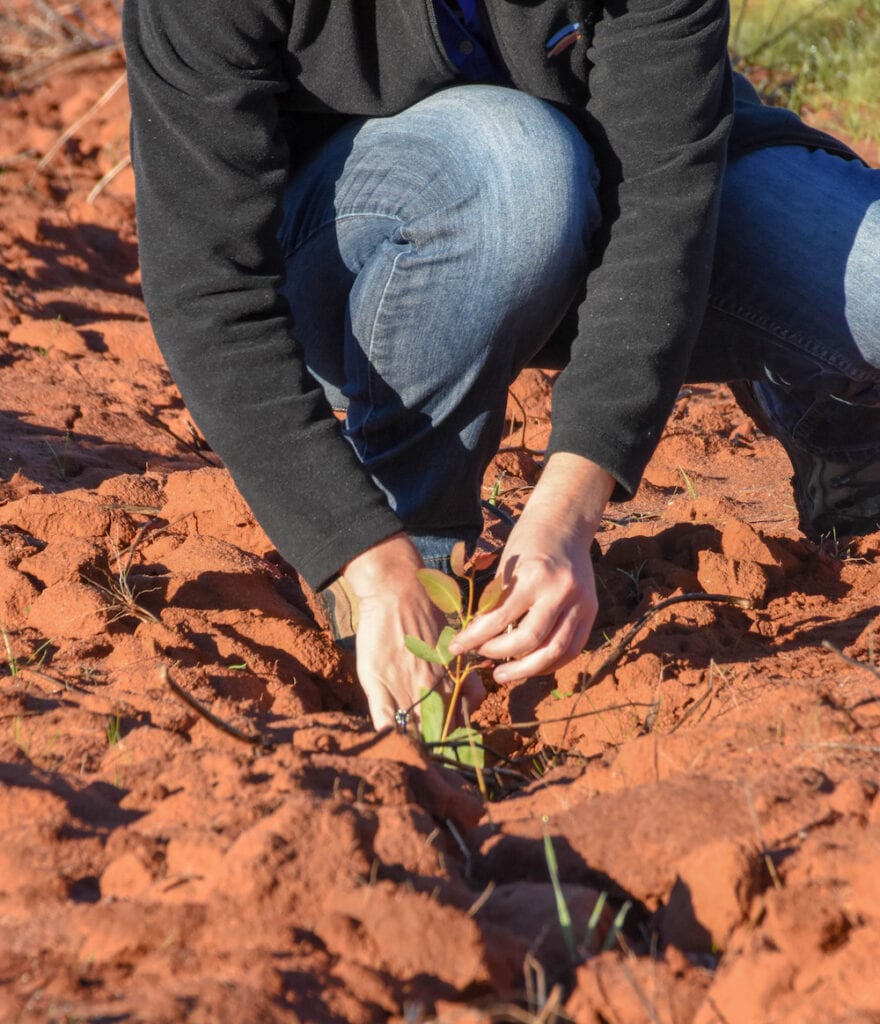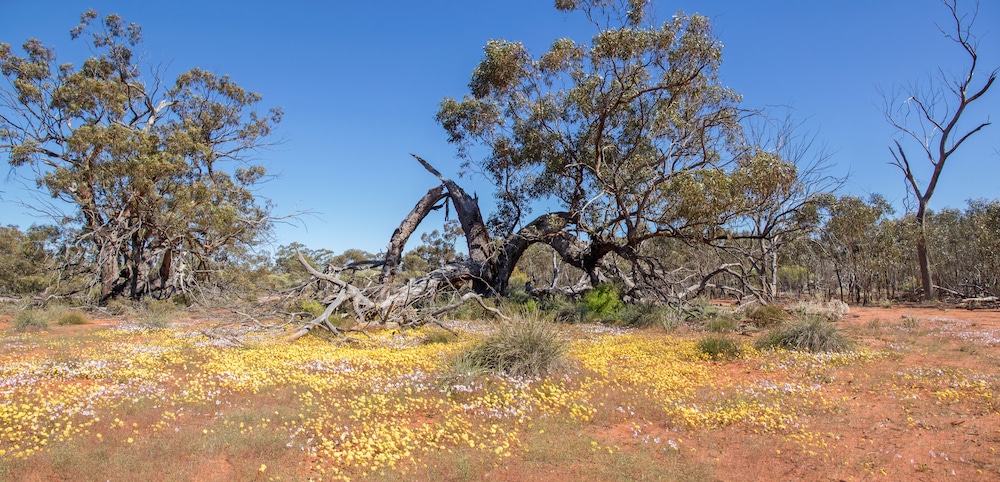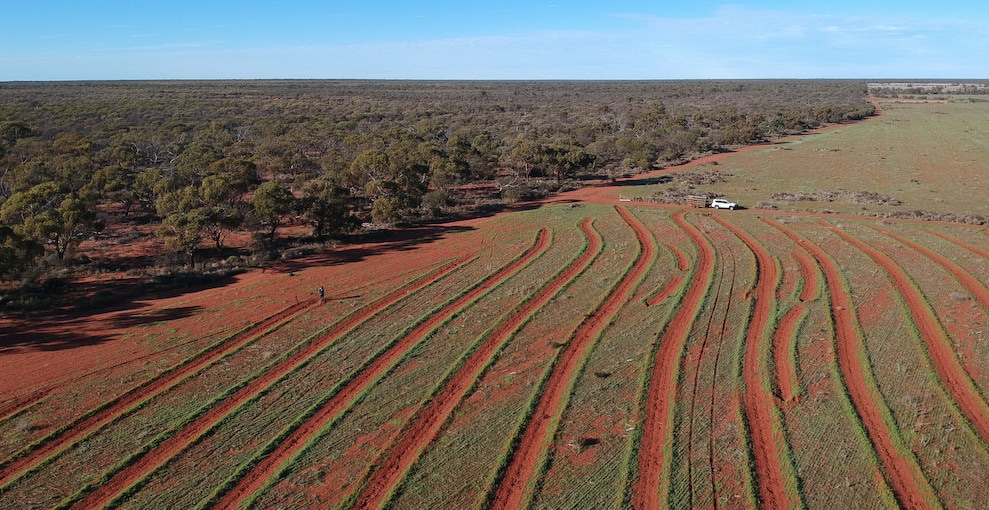Looking for some good environmental news? Join a team of scientists exploring the environmental restoration of unused agricultural land in Western Australia’s wheatbelt and around the world. Their findings, coupled with the global potential for positive impact, are cause for optimism. And, thanks to TERN data infrastructure, all their data are FAIR and ready to enable ongoing science and land management.
In many parts of the world, vegetation clearing for new agricultural land continues to cause environmental degradation, biodiversity loss and increased carbon emissions. However, there are also large swathes of land no longer used for agriculture with large potential to be remediated.
New research utilising TERN infrastructure explores the effects of active restoration on the soil condition and the re-assembly of diverse plant and invertebrate communities. The work, led by Tina Parkhurst of Murdoch University, synthesises restoration outcomes both globally and at the local scale, in the wheatbelt region of Western Australia.

An unused field next to a remnant intact York gum woodland on Bush Heritage Australia’s Eurardy Station Reserve (credit: Ben Parkhurst) Above: Large scale York gum woodland restoration at Bush Heritage Australia’s Eurardy station reserve (credit: Bush Heritage Australia)
Active restoration improves soil condition and plant and animal diversity
Tina says that, unfortunately, land restoration efforts are often constrained by legacies of agricultural land-use and active restoration is needed to overcome difficult tipping points and assist an ecosystem’s biodiversity re-assembly and move towards a ‘reference state’.
“Active restoration uses management action such as planting vegetation, weed control, burning, and/or thinning to achieve the desired outcomes.”
Tina Parkhurst, Murdoch University

Tina Parkhurst planting a York gum seedling at Bush Heritage Australia’s Eurardy station reserve (credit: Bush Heritage Australia)
Tina and her colleagues, Suzanne Prober (CSIRO) and Rachel Standish (Murdoch University), characterised the chemical and physical properties of soil, vegetation diversity, and ant assemblages (a useful biodiversity indicator) in three different states of production: 1) fallow croplands (restoration starting point); 2) old fields revegetated 10-years ago; and 3) reference woodlands.
They also tested whether the addition of woody debris to revegetated old fields can accelerate restoration outcomes, using a multi-site ‘Before-After Control-Impact’ method.
Results show that at a global scale, restoration has positive effects on soil condition, but inconsistent trends for invertebrate species. Overall, recovery remains incomplete. Tina says that these results were mirrored at a local scale
“Whilst concentrations of some soil nutrients in the revegetated old fields we monitored were more like a woodland reference system than fallow croplands, key abiotic thresholds, in particular elevated phosphorus concentrations, persisted. The species richness of the woody vegetation and the total vegetation cover of the revegetated old fields were also similar to the reference woodlands, but the herbaceous species richness and cover, and the amount of large woody debris, remained depauperate and similar to the fallow cropland.
Ant assemblages responded positively to changes in habitat, with increases of species richness and abundance of key functional groups, however full convergence to reference conditions was not observed. We also found that the addition of woody debris to revegetated old fields had few significant effects on soil chemical and biophysical properties and community re-assembly.”
Tina Parkhurst, Murdoch University
Overall, the results of the research show that active old field restoration efforts improve soil condition, plant and animal diversity, however, recovery remains incomplete.

Remnant York gum woodland with diverse understorey at Bush Heritage Australia’s Eurardy station reserve (credit: Bush Heritage Australia)
Data published in TERN to enable ongoing analyses
Tina points out that ongoing research is required to test the efficacy of additional restoration practices beyond tree planting and focus on identifying suitable functional groups of invertebrates to assess restoration outcomes.
To facilitate this future research and adhere to publication requirements, the data were published into TERN’s secure data repository where they can be retrieved by others to create new science, new knowledge and land management tools.
TERN’s data submission tool, SHaRED, has new features aimed at making data publishing as easy as possible for researchers:
- complete redesign of the metadata form to make it more user friendly and intuitive;
- compliancy to ISO 19115-3 metadata standards to improve Interoperability;
- log in using the Australian Access Federation (AAF) single sign on or Google ID;
- direct upload of files up to 100 MB; and
- data linked via several web services such as WMS, WCS, WFS and OpenDAP.
TERN has also received the distinction of being listed by Nature as a recommended data repository for scientific data in the discipline of ecology.
Explore the research data via the TERN Data Discovery Portal:
- Meta-analysis – global dataset of soil condition and invertebrate assemblages after ecological restoration in agricultural landscapes
- Recovery of woody, not herbaceous native flora ten years post old-field restoration
- Dataset for soil nutrients in old field restoration
Click here to view our more in-depth help documentation and user guide or drop us an email at esupport@tern.org.au







